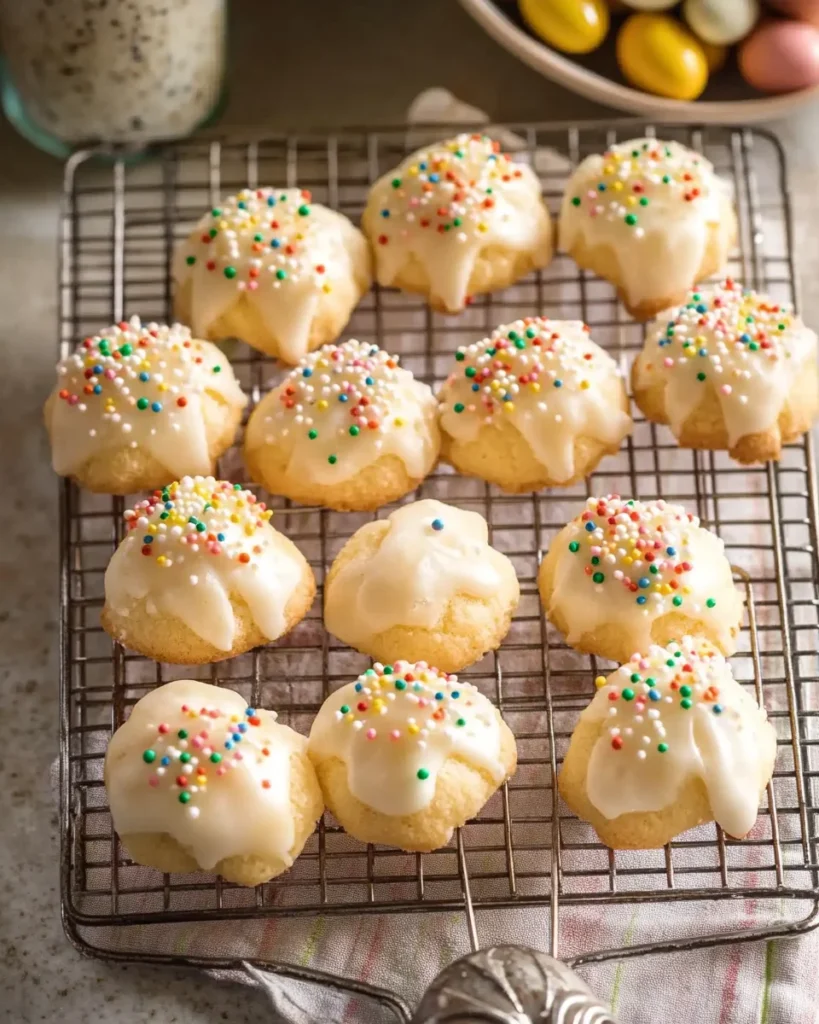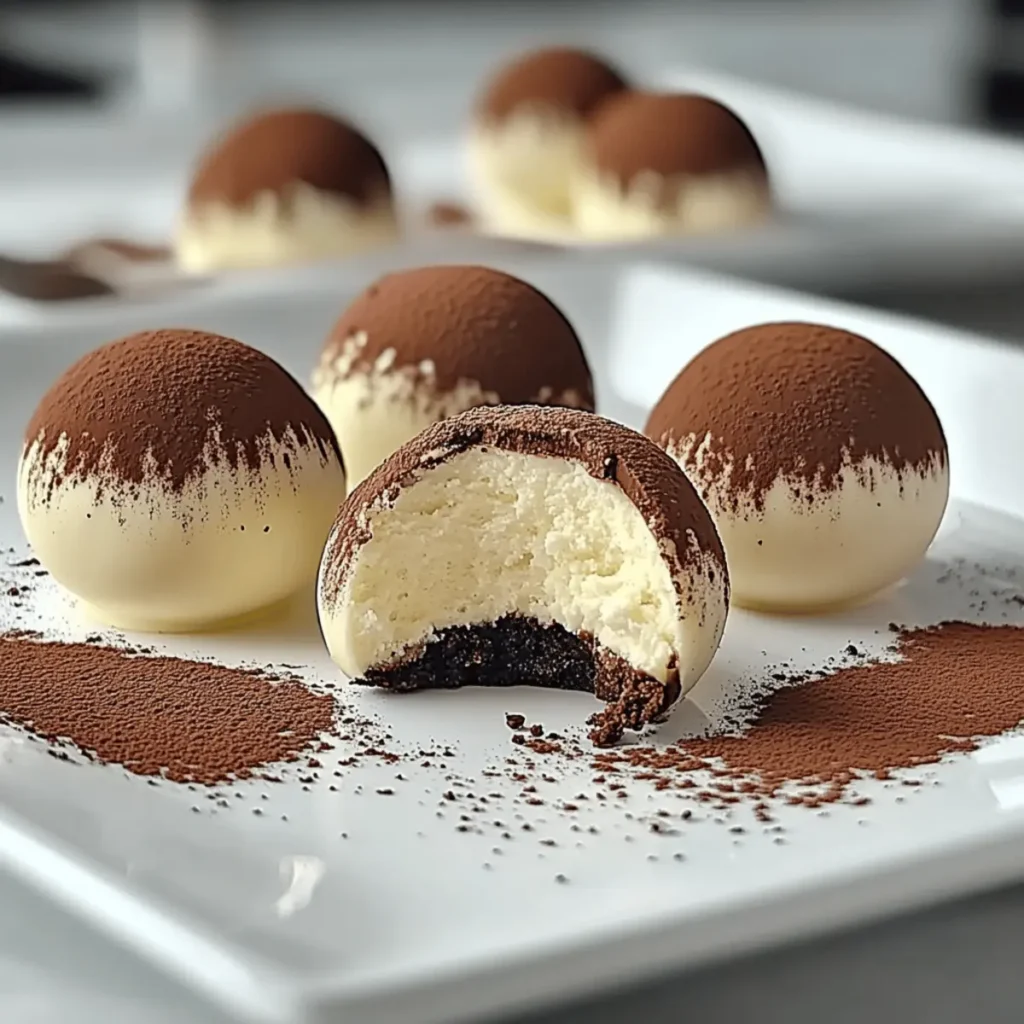Italian Easter celebrations are known for their rich culinary traditions, and no holiday table is complete without a batch of Italian Easter Knot Cookies, or Uncinetti. These delicate, lightly sweetened treats are a symbol of family, tradition, and festive joy, often enjoyed with a cup of espresso or tea.
With their soft, slightly crumbly texture and a hint of citrus from the lemon zest and glaze, these cookies strike the perfect balance between subtle sweetness and bright, refreshing flavors. Unlike typical sugar-heavy desserts, Italian Easter cookies embrace the European philosophy of understated elegance in baking, making them a staple in many Southern Italian households.
This guide will take you through the history of these cookies, expert baking tips, creative variations, serving suggestions, and FAQs so you can create a batch that truly honors Italian tradition.
The History Behind Italian Easter Cookies (Uncinetti)
Uncinetti, also known as Italian Knot Cookies, have been a beloved part of Calabrian Easter traditions for generations. The word “Uncinetti” means crochet, referring to the twisted, knotted shape of these cookies, which is thought to symbolize unity and eternal love—a fitting tribute to the Easter season.
These cookies originated in Vibo Valentia, a province in Calabria, where they were traditionally baked for Palm Sunday and Easter Sunday. Each family often has its own unique recipe, with slight variations in flavor, shape, and texture, depending on regional influences.
Unlike many modern cookies, Uncinetti are not overly sweet—a characteristic common in many Italian pastries. Instead, they rely on lemon zest and a simple glaze to provide a gentle sweetness that complements, rather than overpowers, the delicate texture of the cookie.
Why You’ll Love These Cookies
1. Simple Ingredients, Big Flavor
Italian Easter Knot Cookies require only a handful of basic pantry ingredients, yet they deliver a delicate, sophisticated flavor that pairs beautifully with coffee, tea, or even a glass of dessert wine.
2. A Perfect Balance of Sweetness and Citrus
The natural lemon zest infuses the cookies with a light, refreshing flavor, while the powdered sugar glaze provides just the right amount of sweetness without being overwhelming.
3. Great for Beginners and Seasoned Bakers
These cookies are easy to make and require no special equipment—just a little kneading and shaping by hand. Whether you’re an experienced baker or trying your hand at Italian baking for the first time, this recipe is accessible and rewarding.
4. A Symbolic and Festive Treat
Because of their twisted, knotted shape, these cookies have long been associated with family bonds, faith, and celebration—making them an essential addition to Easter gatherings.
5. Versatile and Customizable
While the traditional lemon-flavored glaze is a favorite, these cookies can be easily customized with different citrus flavors, extracts, or decorations to match your personal taste.
Ingredients – A Taste of Italian Heritage
For the Cookies:
- All-purpose flour
- Granulated sugar
- Baking powder
- Salt
- Lemon zest
- Large egg
- Melted butter
- Milk
For the Lemon Glaze:
- Powdered sugar
- Fresh lemon juice
- Milk
Directions – Crafting the Perfect Italian Easter Cookies
1. Prepare the Dough
- Combine flour, sugar, baking powder, salt, and lemon zest in a bowl.
- Make a well in the center and add the egg, melted butter, and milk.
- Mix until almost combined, then knead lightly to form a smooth dough.
2. Shape the Cookies
- Roll dough into thin ropes, approximately 5-6 inches long.
- Shape into knots or small rings and place on a parchment-lined baking sheet.
3. Bake Until Lightly Golden
- Bake at 300°F for 15-18 minutes, or until the cookies are slightly golden.
4. Add the Lemon Glaze
- Mix powdered sugar, lemon juice, and milk to form a smooth glaze.
- Once cookies have cooled, drizzle with glaze or dust with powdered sugar.
Nutritional Breakdown – A Light, Sweet Treat
Per cookie (approximate values):
- Calories: 76 kcal
- Carbohydrates: 9g
- Protein: 2g
- Fat: 4g
- Saturated Fat: 2g
- Cholesterol: 23mg
- Sodium: 38mg

Expert Tips for the Perfect Italian Easter Knot Cookies
While these cookies are simple to make, a few expert techniques can take them from good to truly authentic.
1. Use Fresh Lemon Zest for the Best Flavor
The lemon zest is the key to enhancing the delicate sweetness of these cookies. Always use fresh lemons rather than bottled juice to get bright, natural citrus notes.
2. Knead the Dough Gently
The dough for these cookies should be firm yet pliable. Over-kneading can result in tough cookies, so mix just until everything comes together into a smooth, workable dough.
3. Keep the Cookie Size Consistent
When shaping the cookies, aim for uniform sizes to ensure even baking. Rolling them into thin ropes before knotting helps maintain a light texture.
4. Chill the Dough for Better Texture
Allowing the dough to rest in the refrigerator for 15-20 minutes before shaping will help the flavors develop and prevent excessive spreading in the oven.
5. Bake Until Just Lightly Golden
Italian Easter Knot Cookies should be pale in color with a slightly golden edge. Overbaking can make them too dry, so keep a close eye on them.
6. Adjust the Glaze to Your Preference
For a thicker glaze, use less milk; for a lighter drizzle, add a little more. The glaze should be smooth and pourable but not too runny.
Creative Variations to Try
While the classic lemon-flavored Uncinetti is a favorite, there are many ways to put a personal twist on this traditional recipe.
1. Orange or Almond-Infused Cookies
- Replace the lemon zest with orange zest for a slightly sweeter citrus flavor.
- Add a few drops of almond extract to complement the nutty undertones.
2. Chocolate-Dipped Easter Knot Cookies
- After glazing, dip half of each cookie in melted dark or white chocolate for an elegant finish.
3. Anise-Flavored Uncinetti
- Add a small amount of anise extract to the dough for a traditional Italian bakery flavor.
4. Colored Easter Sprinkles
- Before the glaze sets, top the cookies with pastel-colored sugar pearls or sprinkles for a festive Easter touch.
5. Olive Oil Version
- Swap out the butter for light olive oil for a slightly softer, Mediterranean-style cookie.
Serving Suggestions
1. Paired with Coffee or Tea
These cookies are perfect with a hot cup of espresso, cappuccino, or herbal tea, making them a delightful afternoon treat.
2. As Part of an Easter Dessert Platter
Serve these alongside other Italian Easter favorites like Colomba (Easter Dove Bread), Pastiera Napoletana, or Ricotta Cheesecake for an authentic holiday spread.
3. With a Glass of Dessert Wine
For an elegant after-dinner pairing, try serving these cookies with a glass of Vin Santo, Moscato, or Limoncello.
Frequently Asked Questions (FAQs)
1. How Should I Store Italian Easter Cookies?
Store the cookies in an airtight container at room temperature for up to one week. They maintain their texture best when stored properly.
2. Can I Freeze the Dough?
Yes! The dough can be frozen for up to three months. Wrap it tightly in plastic wrap and store in an airtight container. Thaw in the refrigerator before shaping and baking.
3. Can I Use Different Citrus Flavors?
Absolutely! These cookies work well with orange, lime, or even grapefruit zest for a unique twist.
4. Can I Make These Cookies Softer?
If you prefer a softer texture, try adding an extra tablespoon of milk to the dough and reducing the baking time by a minute or two.
5. Are These Cookies Gluten-Free?
The traditional recipe uses all-purpose flour, but you can substitute with a gluten-free 1:1 baking blend for a gluten-free version.
Conclusion: A Timeless Italian Easter Tradition
Italian Easter Knot Cookies are more than just a dessert—they are a celebration of heritage, family, and faith. Their light, citrusy flavor, delicate sweetness, and charming knot shape make them a standout treat for Easter gatherings, springtime celebrations, or everyday indulgence.
Whether you stick to the classic recipe or experiment with new variations, these cookies will always bring a taste of tradition and warmth to your table.
So, gather your ingredients, embrace the art of Italian baking, and enjoy this simple yet elegant treat that has been cherished for generations!
Print
Italian Easter Knot Cookies: A Timeless Tradition of Sweet Simplicity
- Total Time: 33 minutes
- Yield: 20-24 cookies
Description
A staple of Italian Easter celebrations, Uncinetti (Italian Easter Knot Cookies) are delicate, lightly sweetened treats with a refreshing hint of citrus. Their soft, slightly crumbly texture and lemon glaze make them a perfect pairing for coffee or tea. These symbolic cookies, shaped into knots, represent unity and eternal love—an elegant and festive addition to your Easter table.
Ingredients
For the Cookies
- 2 cups all-purpose flour
- ½ cup granulated sugar
- 1 ½ tsp baking powder
- ¼ tsp salt
- 1 tbsp lemon zest
- 1 large egg
- ¼ cup melted butter
- ¼ cup milk
For the Lemon Glaze
- 1 cup powdered sugar
- 2 tbsp fresh lemon juice
- 1 tbsp milk
Instructions
1. Prepare the Dough
- In a mixing bowl, whisk together flour, sugar, baking powder, salt, and lemon zest.
- Make a well in the center and add the egg, melted butter, and milk.
- Mix until just combined, then knead gently to form a smooth dough.
2. Shape the Cookies
- Roll the dough into thin ropes, approximately 5-6 inches long.
- Twist into knots or small rings and place on a parchment-lined baking sheet.
3. Bake Until Lightly Golden
- Preheat the oven to 300°F (150°C).
- Bake for 15-18 minutes, or until cookies are slightly golden but still pale.
4. Add the Lemon Glaze
- Whisk together powdered sugar, lemon juice, and milk until smooth.
- Drizzle over cooled cookies or dip the tops for a traditional finish.
Notes
- For Extra Flavor: Try adding 1/2 tsp vanilla or almond extract to the dough.
- Storage: Keep cookies in an airtight container at room temperature for up to 1 week.
- Freezing Option: Dough can be frozen for up to 3 months; thaw before baking.
- Alternative Glaze: Swap lemon juice with orange or almond extract for a twist.
- Decorating Tip: Add festive Easter sprinkles before the glaze sets.
- Prep Time: 15 minutes
- Cook Time: 18 minutes
- Category: Dessert, Easter Treat
- Method: Baking
- Cuisine: Italian






